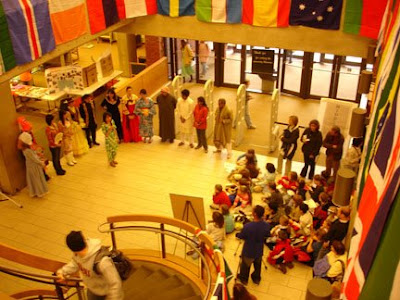 Election Selections: Resources Available in the Geospatial Resources and Map Collection
Election Selections: Resources Available in the Geospatial Resources and Map Collection
Election Day is only weeks away, and maps can be an ideal tool for illustrating information and statistics about elections. The widely-used "blue states and red states" explanation of states' party affiliations has become a cultural phrase made popular by an election map from the 2000 Presidential election.
University Libraries’ Geospatial Resources and Map Collection (GRMC) houses many maps, atlases, and other resources about elections--both current and historical. Maps depicting newly-drawn Congressional districts, maps showing election results, and maps of local election precincts are available for research in the GRMC. U.S. Census data is also available in the GIS lab, and users can access more election statistics from CD-ROMs in the Collection.
One of the most popular election maps in the GRMC is
National Atlas of the United States of America: Presidential Elections, 1789-2000. This map (shown above), published by the federal government, shows how each state voted in every presidential election since 1789 with red states depicted as Democratic and blue states as Republican. It features a larger map of the election results of the controversial 2000 election. The main map displays the popular vote by county; an inset map shows the results of the electoral vote. Indiana presents an interesting study in cultural history on the map: Indiana has voted for the Republican candidate in all but four presidential elections since 1896.
The Atlas Collection also provides excellent election resources.
Atlas of American Politics 1960-2000 features several maps about elections, including voter turnout. This atlas also contains maps illustrating important events such as the impeachment vote of President Clinton and topics such as the environment, capital punishment, abortion, and the number of women serving in state legislatures. The Atlas Collection also includes election resources from other countries, including the first elections in Kosovo and Poland.
Researchers can also access a new cartographic study guide from the GRMC,
Cartographic Resources for Political Science and Election Research, at
http://www.bsu.edu/library/media/pdf/poliscienceresourcesguide.pdf. Voters may even find these election resources helpful in making their Election Day selections.
The GRMC is open Monday through Friday from 8:00 A.M. to 5:00 P.M.







